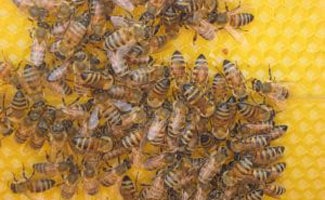How to Avoid Grizzly Bear Attacks
 The grizzly bear is native to North America and as such there are a number of cases each year in which grizzlies run in to humans. Unfortunately for humans caught in these situations, the grizzly bear handles such conflict by standing its ground but when they feel threatened these bears don’t hesitate to attack those confronting them. While attacks by grizzly bears are not as common as many people think, the attacks that do take place are often fatal. In this article we will cover a number of aspects of grizzly bear attacks including why grizzlies attack and some of the most recent incidences of grizzly bear attacks.
The grizzly bear is native to North America and as such there are a number of cases each year in which grizzlies run in to humans. Unfortunately for humans caught in these situations, the grizzly bear handles such conflict by standing its ground but when they feel threatened these bears don’t hesitate to attack those confronting them. While attacks by grizzly bears are not as common as many people think, the attacks that do take place are often fatal. In this article we will cover a number of aspects of grizzly bear attacks including why grizzlies attack and some of the most recent incidences of grizzly bear attacks.
The Origin of the Grizzly Bear
The grizzly bear gets its name from the grizzled appearance of its fur. It is believed that this species of bear is descended from the brown bears of Russia. 100,000 years ago when passage from Russia to Alaska was possible, these bears traveled in to the northern United States and began to slowly move downward covering more geographic area. Of all varieties of bear, the brown bear is one of the widest ranging species, not only covering areas of the United States but also found in Asia and Europe as well. While differences exist between the brown bear species that inhabit the U.S. and Asia and Europe, there are also many similarities between these ursine species.
The Appearance of the Grizzly Bear
The grizzly bear ranges in size from 300 to 800 pounds and is on average around 6.5 feet high. The female is smaller than the male, weighing in between 300 and 450 pounds. All grizzly bears feature a hump on their shoulders that is often referenced by those unfamiliar with the bear when trying to distinguish between a black bear and brown bear species. While it may seem like common sense that a black bear is black and a brown bear is brown, the grizzly bear can actually appear to be such a dark brown that it looks almost black. In addition, the brown bear can also appear to have whitish tips to its fur and look blond in color.
Habits of the Grizzly Bear
The grizzly bear is a mostly solitary creature and it prefers to live and hunt independently. However, during specific times of the year, the grizzly will give up this solitary lifestyle. Most notably right as salmon are spawning in lakes and rivers, grizzly bears will congregate in smaller groups in order to feed. The larger of the species are always given a wide berth, even by other members of the grizzly species, because of the sheer aggressiveness of the male grizzly bear. If faced with an annoying cub that stands in his way during feeding time, the large male grizzly would not hesitate to kill the cub. While the female grizzly is protective of her cubs she would rarely even think to challenge a male grizzly even when her young are being threatened. Generally, the female grizzly ensures that her young stay away from the larger males and out of danger. When faced with other threats such as predators or humans in their territory, the female grizzly will defend her young aggressively and many grizzly bear confrontations are the result of a female grizzly defending her cubs against a perceived threat.
Reproduction Among Grizzly Bears
The grizzly bear female can reproduce once every two years. The grizzly bear species is able to delay implantation of a fertilized embryo until hibernation so that pregnancy occurs while the female bear is hibernating. During hibernation a female grizzly that does not have a high enough fat content stored to offer proper nutrition to her embryo will miscarry. Females that do carry young through a full term pregnancy most commonly give birth to two cubs. The mom will then care for the cubs for up to two years. This extended period of parenting is why the grizzly bear has such low reproductive rates. Even after the female loses her cubs either as a result of them leaving the den or being killed the female grizzly can wait as long as three or four more years before mating again. Not only is the delayed reproduction rate of the grizzly bear a concern when it comes to populations of these bears but so too is the level of inbreeding that occurs as a result of the fragmentation of the population. Male grizzlies have such large territories that finding females within nearby areas can prove to be particularly difficult and inbreeding becomes increasingly prevalent.
Are Grizzly Bears Man Eaters?
The grizzly bear feeds on both plants and animals and while they are most commonly recognized for feeding on salmon, these bears are omnivorous. In addition to salmon, the bear is also known for feeding on black bears, bison, caribou, sheep, elk, bison, moose and deer. Grizzly bears are both active hunters and scavengers feeding upon left over carcasses left by other carnivorous creatures. Research has found that grizzlies that live in areas where more protein enriched food sources are available grow to incredibly large specimens versus those who have little access to protein enriched food sources. Even those grizzlies that feed upon high protein diets consume a large portion of vegetation, fruits and vegetables, The Yellowstone National Park estimates that around 60-70% of the grizzly bear’s diet is composed of vegetation. In general, the grizzly bear does not wish to confront human beings; however, if a confrontation does occur, this large bear species will rarely run away and is most commonly recognized for its tendency to stand its ground.
When Do Grizzly Bears Attack?
The most common incident where a grizzly bear attacks is the result of a female grizzly defending her cubs against human interference. Other grizzly bear attacks tend to be the result of grizzlies that are surprised by humans in their territory. These surprise incidents often occur when a hiker stumbles in to the territory of a grizzly bear and shocks the bear, attack is not always the result but in certain cases, such as when a food supply is involved, the grizzly bear will attack. While most areas where bears are prevalent tend to utilize signs to warn against the presence of bears, the large territory range of these bears can often result in their wandering in to other areas. As humans spread in to bear territory they bring food which lures hungry bears and increases the chance for conflict.
Like most creatures the grizzly bear prefers not to be involved in confrontations with humans. However, a bear that is in the process of storing fat for winter hibernation can become extremely irritable and aggressive and when confronted the need to eat in order to survive winter hibernation can quickly overrule any other instinct. Grizzly bears can gain up to 400 pounds in preparation for hibernation, so that when winter begins to set in, bears that have not stored enough fat to last them through the winter will become desperate. A desperate grizzly bear is just as dangerous as a female grizzly bear protecting her cubs, they will not turn and run, rather they will stand their ground.
Why Do Grizzly Bears Attack?
Obviously grizzly bears attack when they feel threatened as noted above. But one theory that abounds in regard to the prevalence of grizzly bears to attack when confronted revolves around the sheer size of the bear. Where black bears are small enough to turn and run, climbing a tree for safety from a potential threat, the grizzly bear is far too large for this to be an option and as a result they are forced to stand their ground. The grizzly is considered to be the most aggressive of all bear species, many believe that this is related to the sheer size of these bears and pressures that tend to impact the survival of the species including hibernation, reproduction and the results of inbreeding.
Problem Bears
As humans expand in to bear territory and bring with them food supplies which often lure the bears in, many bears become accustomed to the availability of food and make a habit of frequenting camp sites and tourist spots. Many camp sites recommend hoisting food out of reach of grizzly bears in order to reduce the problem behavior that has developed among some of the grizzly bear population. But bears that know that there is food available will generally stop at nothing.
Grizzly bears have been known to break in to cars to steal food that has been stored inside the car out of the belief that it would be safe from bears. When certain bears make a habit of frequenting areas of human gathering they become recognized as problem bears. Problem bears have little issue with entering an area where humans are active and present in order to pursue a food source. This type of behavior is not only undesirable but it is also dangerous as bears and humans do not mix and often this type of encounter results in a bear attack. Problem bears are either relocated to another area or those that pose a significant risk to humans are killed. According to the government of British Columbia somewhere around 50 problem bears are killed each year and they spend over a million dollars each year in order to relocate or destroy problem bears.
Tips for Avoiding Grizzly Bear Attacks
There are a number of recommendations that are made by those familiar with grizzly bears in terms of avoiding attack.
Travel in Groups
When traveling in areas that are known for the presence of grizzly bears it is safer to travel in larger groups. The recommended group size is around six individuals. It is believed that the grizzly bear will be less likely to attack a much larger group of people since the larger group poses a more significant threat than that of a single person.
Keep Food Out of Reach
One of the main attractions to grizzly bears is the presence of food so it is important when camping in bear territory to keep food out of range. Many campers do this by hoisting food up in to trees where the grizzly bears cannot reach it, other individuals use “bear canisters” to keep food safe and out of range of a hungry grizzly bear. The less food is available for a grizzly bear the less likely that bear is to come looking for food and be surprised in to an attack.
Stay on the Path
As mentioned above, many bear attacks are the result of a grizzly bear being surprised while feeding; most regions in which grizzly bears are known to travel include sign posts to warn of the presence of these bears. In these areas it is generally much safer to stay on a marked path since wandering in to the wooded areas can frequently result in surprising a bear who is not expecting a human encounter.
Carry a Bear Deterrent
Many hikers who are used to passing through grizzly bear territory carry what is called “bear deterrent.” Bear deterrent is usually a pepper based spray that deters a bear that gets too close for comfort. The spray acts just the same was as it would in humans and causes the bear to flee or to be incapacitated giving the individual time to get away from the threat of a grizzly attack.
Research Local Bear Activity
Being aware of local bear activity is an important part of staying aware. Bears travel throughout large territories and knowing where bears have recently been active can help you to avoid areas where bear attacks are more likely. It is also important to avoid areas where bears are known to congregate such as streams during a salmon run or areas of avalanches that bring in vast food supplies for the bears. If you read of any local bear activity or any natural events that may attract bears it is important to avoid these areas completely.
Be Aware of the Time of Day
Grizzly bears tend to be more active during particular times of day, most often right before the sun goes down and right as the sun is coming up. It is also important to avoid traveling at night since grizzly bears are more easily startled in the dark.
Make Noise
When traveling in an area that is known to have bears it is important to make plenty of noise so that the grizzly bear can be made aware of your presence before it is surprised. By making enough noise a grizzly bear can be scared away before they are startled by your presence.
Video: How to Survive A Grizzly Bear Attack
If you are unfortunately confronted by a grizzly, the best thing you can do is play dead. This short video from National Geographic shows you some tips on how to handle this situation should it arise.
Recent Grizzly Bear Attacks
While records of grizzly bear attacks are numerous, records of fatal grizzly bear attacks are not as numerous. Since 2010 approximately four fatal brown bear attacks have been chronicled.
- In August of 2011 a brown bear attack in Yellowstone National Park killed John Wallace, a 59 year old man who was hiking in the area alone.
- In July of 2011 a brown bear attack in Yellowstone National Park killed Brian Matayoshi, a 57 year old man who was hiking with his wife when they came upon a mother grizzly bear in an open meadow. Matayoshi was killed but after playing dead his wife survived the attack. The bear in this case was not destroyed since she was believed to be acting in defense of her cubs.
- In July of 2010 a brown bear attack in the Gallatin National Forest in Montana killed Kevin Kammer. Kammer, a 48 year old man was attacked in his tent by a mother grizzly bear that also attacked two nearby campers. The predatory behavior of this mother bear was particularly unusual and she was euthanized with her cubs being sent to Zoo Montana for care.
- Lastly in June of 2010 a brown bear attack in Shoshone National Forest in Wyoming killed Erwin Frank Evert. Evert, a 70 year old man was a field botanist who wandered in to bear territory when warning signs had been removed. The bear that killed Evert was shot two days later and killed.
Is It The Nature of the Beast?
Is it the nature of the beast for the grizzly bear to attack? Most researchers say no. The grizzly bear, like most other animals, prefers to avoid confrontation with humans; however, certain circumstances drive the bear to encounters that often result in maulings and death. Certainly these incredibly powerful bears are capable of killing and won’t hesitate to do so in times where they feel threatened, but is it really the nature of the beast to attack in cold blood? Isn’t it our fault as a species for taking increasing amounts of their natural territory away from these bears leaving them to live in smaller areas which even then are not safe from our presence? It could be said that we are to blame for the number of grizzly bear attacks that occur every year and in most cases that would be true, certainly there are a few exceptions to the rule but for the most part these incredible creatures are only doing what comes naturally – protecting their families and feeding for survival.
Have you ever seen or gotten close to a grizzly bear? What was it like?



